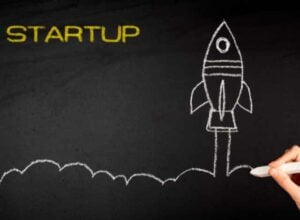In today’s fast-paced business environment, the importance of a well-structured employee training program cannot be overstated. Companies that invest in their workforce not only enhance employee satisfaction and retention but also improve overall productivity and innovation. A comprehensive training program proposal serves as a roadmap for organizations looking to develop their employees’ skills and competencies.
It outlines the rationale behind the training, the specific needs it addresses, and the anticipated outcomes, ensuring that all stakeholders are aligned with the vision and objectives. Crafting a compelling training program proposal requires a deep understanding of the organization’s goals and the specific skills that need enhancement. It is essential to present a clear case for why the training is necessary, how it aligns with the company’s strategic objectives, and what benefits it will bring to both employees and the organization as a whole.
By laying a solid foundation in the proposal, businesses can secure buy-in from key stakeholders and ensure that the training initiative is well-supported throughout its implementation.
Identifying Training Needs and Objectives
Identifying Training Needs
The first step in developing an effective employee training program is to identify the specific training needs within the organization. This process often begins with a thorough assessment of current employee skills, performance gaps, and future organizational goals. Conducting surveys, interviews, or focus groups can provide valuable insights into what employees feel they need to improve upon.
Assessing Current Performance
Additionally, analyzing performance reviews and feedback can help pinpoint areas where training could lead to significant improvements. This assessment is crucial in determining the areas that require attention and improvement. By understanding the current state of employee skills and performance, organizations can make informed decisions about the type of training that is needed.
Setting Clear Objectives
Once the training needs have been identified, it is crucial to establish clear objectives for the program. These objectives should be specific, measurable, achievable, relevant, and time-bound (SMART). For instance, if a company identifies a gap in project management skills among its employees, a relevant objective might be to increase project completion rates by 20% within six months of training.
Evaluating Effectiveness
By setting clear objectives, organizations can better evaluate the effectiveness of their training initiatives and ensure that they are aligned with broader business goals. This allows them to track progress, make adjustments as needed, and ultimately achieve the desired outcomes from their training programs.
Designing the Training Program
With a clear understanding of training needs and objectives, the next step is to design a comprehensive training program that addresses these requirements. This involves determining the content of the training, the structure of the program, and how it will be delivered. A well-designed program should incorporate various learning styles to cater to different employee preferences.
For example, some employees may benefit from hands-on workshops, while others may prefer online courses or mentorship opportunities. In addition to content and delivery methods, it is essential to consider the duration and frequency of training sessions. A program that is too lengthy may lead to disengagement, while one that is too short may not provide sufficient depth.
Striking a balance is key; for instance, a blended learning approach that combines online modules with in-person workshops can offer flexibility while ensuring comprehensive coverage of essential topics. Furthermore, incorporating real-world scenarios and case studies can enhance learning by providing practical applications of theoretical concepts.
Selecting Training Methods and Tools
Choosing the right training methods and tools is critical to the success of any employee training program. Various options are available, including traditional classroom training, e-learning platforms, on-the-job training, coaching, and simulations. Each method has its advantages and disadvantages, so it is essential to select those that best align with the identified training needs and objectives.
For example, if the goal is to enhance technical skills in software development, an e-learning platform that offers interactive modules and assessments may be most effective. Conversely, if the focus is on leadership development, a combination of coaching sessions and group workshops may yield better results. Additionally, leveraging technology such as virtual reality (VR) or augmented reality (AR) can create immersive learning experiences that engage employees in ways traditional methods cannot.
Ultimately, selecting diverse methods ensures that employees remain engaged and motivated throughout their learning journey.
Creating a Budget and Timeline
Developing a budget and timeline for the training program is a crucial step that requires careful consideration of various factors. The budget should encompass all aspects of the program, including materials, facilitators’ fees, venue costs (if applicable), technology investments, and any additional resources needed for successful implementation. It is essential to conduct thorough research to obtain accurate cost estimates and explore potential funding sources or grants that may be available to support employee development initiatives.
In parallel with budgeting, establishing a realistic timeline for the training program is vital. This timeline should outline key milestones such as program development phases, marketing efforts to promote participation among employees, and actual training dates. A well-structured timeline not only helps keep the project on track but also allows for adjustments as needed based on feedback or unforeseen challenges.
By being proactive in budgeting and scheduling, organizations can ensure that their training programs are both financially viable and timely.
Presenting the Proposal to Stakeholders
Once the proposal has been developed, presenting it effectively to stakeholders is essential for gaining their support and commitment. This presentation should clearly articulate the rationale behind the training program, including its alignment with organizational goals and anticipated benefits for both employees and the company as a whole. Utilizing visual aids such as slideshows or infographics can help convey complex information in an easily digestible format.
Engaging stakeholders during the presentation is equally important. Encouraging questions and discussions can foster a sense of ownership among stakeholders and allow them to voice any concerns or suggestions they may have. Additionally, providing real-world examples or case studies from other organizations that have successfully implemented similar training programs can bolster credibility and demonstrate potential outcomes.
By effectively communicating the value of the proposed training initiative, organizations can secure buy-in from key decision-makers.
Implementing and Evaluating the Training Program
With stakeholder approval secured, it’s time to implement the training program. This phase involves coordinating logistics such as scheduling sessions, securing venues or online platforms, and ensuring all necessary materials are prepared in advance. Effective communication with participants is crucial during this stage; providing clear instructions on what to expect can help alleviate any anxiety or uncertainty they may have about the training.
Evaluation should be an ongoing process throughout implementation. Gathering feedback from participants after each session can provide valuable insights into what is working well and what may need adjustment. Utilizing tools such as surveys or informal check-ins can help gauge participant engagement and satisfaction levels.
Additionally, measuring progress against established objectives will allow organizations to assess whether the training is achieving its intended outcomes.
Revising and Updating the Training Program
The final step in enhancing grant proposal success through employee training programs lies in revising and updating them based on feedback and changing organizational needs. Continuous improvement should be at the forefront of any training initiative; this means regularly reviewing content, methods, and outcomes to ensure they remain relevant and effective. As industries evolve and new technologies emerge, it’s essential for organizations to adapt their training programs accordingly.
This could involve incorporating new topics or skills into existing curricula or even redesigning entire programs based on participant feedback or shifts in business strategy. By fostering a culture of continuous learning and development within the organization, companies can ensure that their workforce remains competitive and well-equipped to meet future challenges. In conclusion, developing an effective employee training program proposal requires careful planning, execution, and ongoing evaluation.
By following these actionable steps—identifying needs, designing content, selecting methods, budgeting effectively, presenting persuasively, implementing diligently, and revising continuously—organizations can create impactful training initiatives that drive employee growth and contribute to overall business success.























